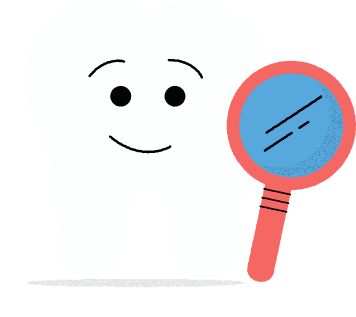When it comes to straightening your teeth, the options can feel overwhelming. Should you go for braces or opt for the clear, removable aligner system like Invisalign? The right choice depends on factors such as your dental condition, lifestyle, budget, and personal preferences.
Orthodontic treatment is more than just a cosmetic enhancement. Properly aligned teeth contribute to better oral health, reducing risks of gum disease, tooth decay, and bite-related issues.
We know that choosing the right treatment can feel like a big decision — but a worthwhile one. After all, it’s an investment in your confidence. That is why we are here to help you make an informed decision as you choose the right teeth straightening options that suit your unique needs.
Invisalign is just one of the well-known brands among clear aligners and is the focus of this article. We share more about clear aligners vs braces in general here.
Invisalign or Braces: Understanding the Options
Not every treatment works for everyone. Some people want a discreet, nearly invisible way to straighten their teeth, while others need a more robust solution. Here is a closer look at each option:
Braces
Braces use brackets and wires to apply continuous pressure, gradually aligning teeth. There are three main types:
- Metal braces: Made from high-grade stainless steel, braces are highly durable and can handle significant tooth movement. This makes them the most common and effective for complex cases, but they’re also the most noticeable.
- Ceramic braces: These function similarly to metal braces but use tooth-coloured or clear brackets so they’re less visible than metal braces. However ceramic braces can be slightly more fragile and prone to staining.
- Lingual braces: Placed behind the teeth, making them virtually invisible from the front. These braces are highly effective but may take some time getting used to and are also the most expensive.
Invisalign’s Clear Aligner System
Invisalign’s clear aligners are custom-made, clear plastic that is moulded to fit snugly over your teeth. With Invisalign, you would switch to a new set of aligners every 1-2 weeks, gradually shifting your teeth into place. The aligners are removable, making eating and cleaning easier. Being nearly invisible, it means your teeth straightening treatment can go almost unnoticed — a benefit that many people prefer.
Which Is Better – Invisalign Clear Braces or Braces?
At the end of the day, the goal is the same — a straighter, healthier smile! So, which option is more effective? The answer depends on your specific dental needs.
Braces are the best option for severe misalignments, offering a fixed and highly effective solution. Invisalign, on the other hand, is a great choice for those seeking a discreet, comfortable, and removable alternative, particularly for mild to moderate cases. Lifestyle considerations, such as frequent public speaking or a preference for fewer dietary restrictions, may also influence your decision.
Braces vs Invisalign: Key Differences at a Glance
Let’s break down the key differences between braces and Invisalign clear aligners.
| Feature | Braces | Aligners |
| Visibility | Visible metal / ceramic brackets | Near invisible clear aligners, but with attachments it is more visible |
| Comfort | Can cause irritation | Smooth plastic, no brackets or wires |
| Maintenance | Requires careful cleaning around brackets | Easier oral hygiene due to removability, but aligners need to be cleaned as well |
| Diet Restrictions | Avoid sticky / hard foods | Less restrictions (remove aligners when eating), attachments may be stained by turmeric or broken by hard foods |
| Eating | Can eat and drink with your braces on as often as you like | Have to remove aligners for eating and drinking, not ideal for grazing or frequent snacking |
| Treatment Time | May be faster for complex cases | Varies significantly; requires patient compliance |
| Effectiveness | Works for all cases | Best for mild to moderate cases |
The best way to determine what’s right for you? Consult an orthodontist who can assess your teeth and recommend the most effective option for your smile.
How Long Does Invisalign Take vs Braces?
Wondering how long you will be in treatment? It really depends on your unique situation. For simple mild cases focusing on alignment with no bite correction required, both braces and aligners could take as little as 6 months. Most treatments will require some bite correction though and these moderate cases will take between 12 to 24 months to finish. Complex cases, which are usually done with braces, can take up to 36 months to complete
- Braces: 6 to 36 months, depending on complexity.
- Invisalign: 6 to 24 months, but requires strict wear compliance.
Learn more about traditional braces vs clear aligners here.
Cost Considerations: Invisalign vs Braces Cost
Finally, the big question — how much does Invisalign cost vs braces? It’s hard to say which is cheaper because the cost of orthodontic treatment varies based on the type of braces and aligners chosen, just as much as your treatment duration. Your orthodontist will be able to provide you with a personalised quote after an initial consultation.
But to give you a rough idea, here’s a common range for each:
Traditional metal braces: $7,000 to $9,000
Ceramic braces: $7,500 to $9,500 due to their more discreet appearance.
Lingual braces: $10,000 to $12,000 which makes them the most expensive
Invisalign treatment for dual arch clear aligners generally falls within a similar range, with standard treatment priced between $8,000 and $10,000.
Our advice is to always find out if your insurance covers part of the expense. Many orthodontic clinics also offer payment plans and financing options to make treatment more accessible.
More details on how much braces cost here.
Invisalign vs Braces: Pros and Cons
Both Invisalign and braces have their own set of advantages and challenges. Understanding these can help you make an informed decision based on your lifestyle, budget, and dental needs.
Here is a breakdown of the pros and cons of each option:
| Advantages of Aligners | Advantages of braces |
|
|
| Disadvantages of Invisalign | Disadvantages of braces |
|
|
Potential Downsides of Invisalign and Braces
No treatment is perfect, and both Invisalign and braces come with their own challenges. Braces are incredibly effective, but they can be uncomfortable — especially after adjustments — and come with food restrictions. Crunchy apples, chewy lollies, and popcorn? Off the menu. This can be tricky for kids (who might not love giving up their favourite snacks) and adults who want to eat confidently in professional or social settings.
Invisalign, on the other hand, is more discreet and generally more comfortable, but it requires discipline. Because the aligners are removable, it’s easy to misplace them or forget to put them back in—especially for younger wearers. And if they’re not worn for at least 20-22 hours a day, treatment can take longer than expected. It also restricts the amount of time you can spend eating or drinking each day, so grazing and frequent snacking is off the menu.
Another thing to consider is complexity. Invisalign works well for mild to moderate cases, but for more severe misalignments or bite issues, braces offer more precision and control.
At the end of the day, the right choice comes down to lifestyle, age, level of commitment, and the complexity of your case.
Expert Advice from Orthodontics Australia
The best way to figure out whether braces or Invisalign are right for you is to talk to an expert. Your smile is one of the first things people notice, and choosing the right treatment can make a huge difference — not just in how you look, but in how you feel. A professional orthodontist will assess your unique needs and recommend the best option, so you can move forward with confidence, knowing your treatment is in good hands.
Having an experienced orthodontist by your side makes all the difference. They will guide you through the process, troubleshoot any concerns, and ensure you get the best possible results. Because at the end of the day, it’s not just about straightening teeth — it’s about investing in a smile you will love for years to come.
Find an orthodontic specialist near you and take the first step toward a straighter, more confident smile!









